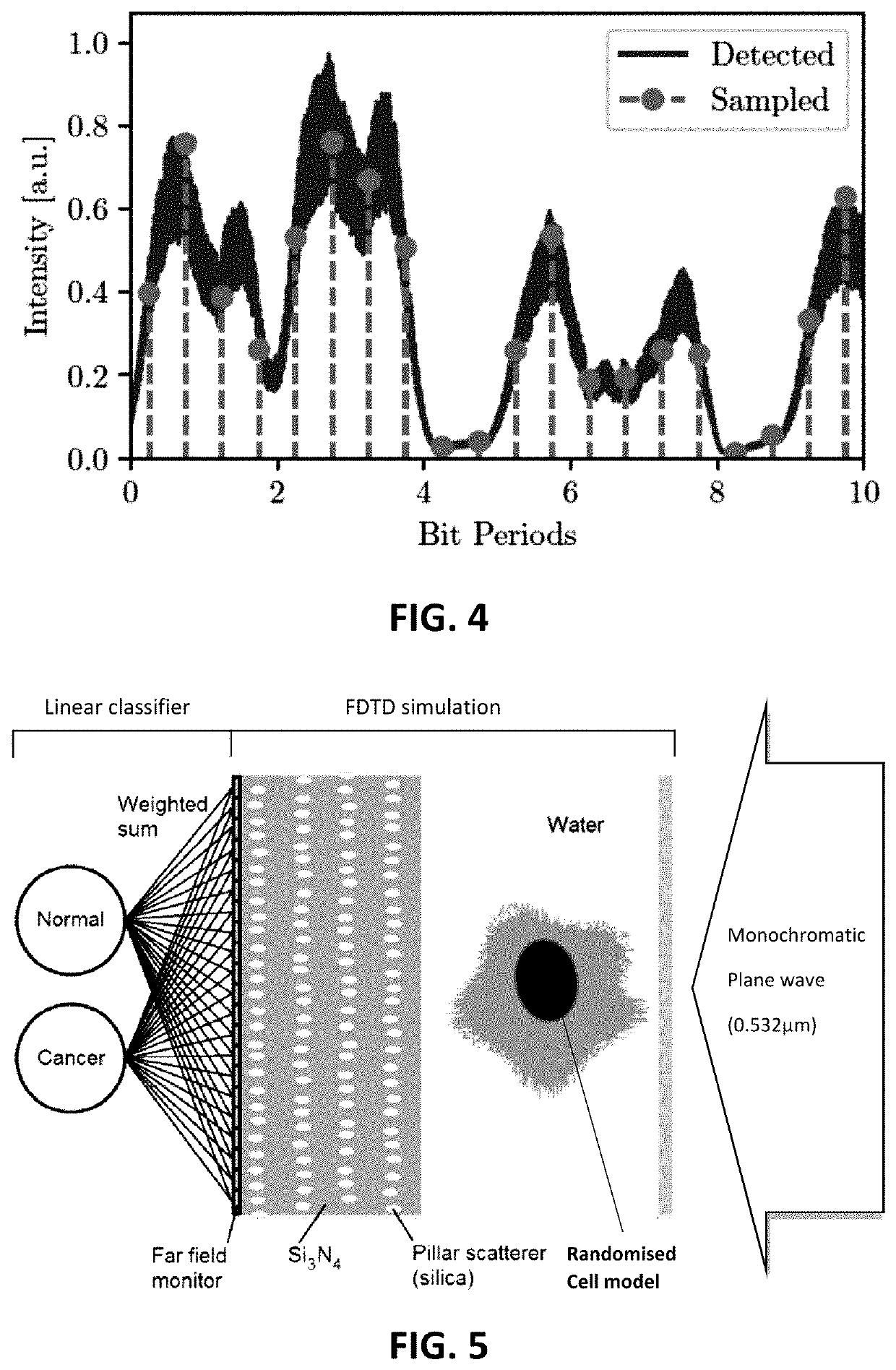Object classification system and method
a classification system and object technology, applied in the field of optical wavebased computing, can solve the problems of limiting the complexity of tasks that can be performed, limiting the complexity of the proposed implementation, and most of the processing still happens, so as to improve the signal mixing properties of the mixing unit, reduce the complexity of the overall system, and improve the effect of memory
- Summary
- Abstract
- Description
- Claims
- Application Information
AI Technical Summary
Benefits of technology
Problems solved by technology
Method used
Image
Examples
example 1
[0104]In the first example, benchmarking of the wave-based computing system as shown in FIG. 1 is discussed.
[0105]A first benchmark for the memory of the signal is the ability to reproduce the exact input with a certain amount of delay. From FIG. 7, for the current design, there is quite a wide basin of operation. Using 5 outputs results in being able to reproduce the input with a larger delay, which makes sense because of the increased Q factor and thus memory for 5 outputs.
[0106]A second benchmark which illustrates the ability to perform Boolean operations is the nonlinear xor task, where the xor is taken between two bits bn and bn-k, k bits apart. Since a normal conventional linear classifier can only achieve a minimum of 25% error rate, it is also a good performance indicator of the nonlinearity in the system.
[0107]First, the performance of an xor on two neighboring bits was assessed, while continuously increasing the bit separation. We call this the xor-specific memory of the r...
example 2
[0112]In the second example, the simple passive photonic chip containing a collection of silica pillar scatterers embedded in silicon nitride as shown in FIG. 5 is used as interface between a biological cell hologram projection and a line-scan image sensor, in order to simplify and speed up a machine learning processing on the acquired image. In particular, the classification of cells of different nucleus sizes flowing along a microfluidic channel equipped with a digital holographic microscope was simulated through 2D FDTD simulations. The scatterers are employed to better exploit the nonlinear relation that links the cell refractive index structure (and the corresponding phase shift exerted on the impinging light) with the radiation intensity collected by the sensor. In this way, the complexity of a nonlinear stage can be controlled in order to increase the performances of a linear classifier that acts on the output of the sensor pixels. The proposed implementation illustrates that...
PUM
| Property | Measurement | Unit |
|---|---|---|
| wavelength | aaaaa | aaaaa |
| half life | aaaaa | aaaaa |
| half life time | aaaaa | aaaaa |
Abstract
Description
Claims
Application Information
 Login to View More
Login to View More - R&D
- Intellectual Property
- Life Sciences
- Materials
- Tech Scout
- Unparalleled Data Quality
- Higher Quality Content
- 60% Fewer Hallucinations
Browse by: Latest US Patents, China's latest patents, Technical Efficacy Thesaurus, Application Domain, Technology Topic, Popular Technical Reports.
© 2025 PatSnap. All rights reserved.Legal|Privacy policy|Modern Slavery Act Transparency Statement|Sitemap|About US| Contact US: help@patsnap.com



